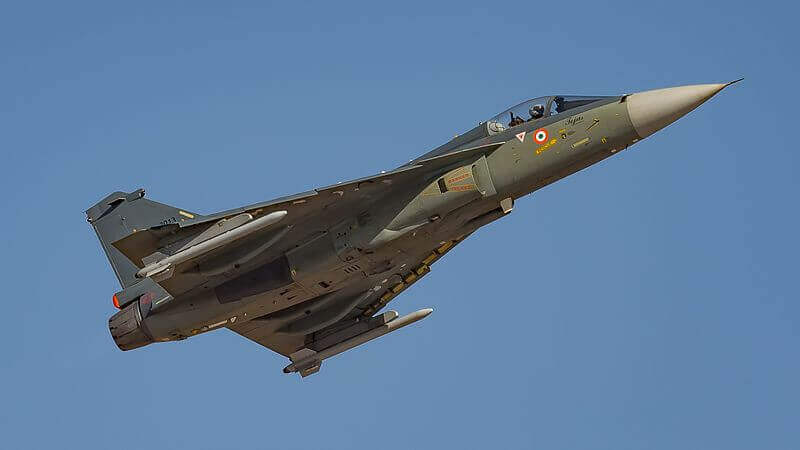Indigenous or imported? This is the biggest dilemma India is facing of late when it comes to defense production.
Is India’s Short-Range Prithvi-II Missile More Powerful Than Its Pakistani Counterpart ‘Ghaznavi’?
Since the China-India border tragedy left 20 Indian soldiers dead in June 2020 and subsequent minor skirmishes followed, India’s strategic imperative to strengthen its indigenous defense industrial base has gained increased traction.
For one, the government expedited domestic arms procurement by approving projects worth $4.44 billion and purchased artillery from the US, Spike anti-tank guided missiles from Israel, and Igla-S surface-to-air missile systems from Russia.
This fast-track measure is exceptional, given that a labyrinth of bureaucratic procedures and ample test failures continue to beleaguer India’s acquisition of advanced weapons systems.
To achieve Prime Minister Modi’s Atmanirbhar Bharat (self-reliant India) vision, New Delhi’s ‘swadeshi’ (indigenous) dictum over ‘videshi’ (imported) needs will require a cautious approach.
With the third-largest military by expenditure, India is, ironically, the second largest arms importer (behind Saudi Arabia) without an indigenous defense manufacturing company listed in the top 20.

India seeks to maintain regional domination and obtain sufficient firepower to protect its immediate borders. The span of the Indian Ocean Region (IOR) is parallel to the Chinese ambition of the First Island Chain. Consistent with this ambition is what Chief of Defense Staff General Bipin Rawat contended:
“We are not expeditionary forces that have to deploy around the globe. We have to guard and fight only along our borders and, of course, dominate the Indian Ocean Region. So, we should not go in for large amounts of imports by misrepresenting our operational requirements. Covid-19 has affected everybody.
“We need to be realistic, start adjusting, and have a major relook at our operational priorities and what we actually need. Arms imports, along with the supply of spares and maintenance, have become increasingly cost-prohibitive…
“We should boost ‘Make in India’ by hand-holding our domestic industry even if they deliver weapons with only 70% of the GSQRs (general staff qualitative requirements) in the beginning…given the opportunity, they will eventually deliver cutting-edge technology.”
India’s desire to develop its domestic defense base reflects two sets of concerns: the desire to be self-reliant and the desire to avoid the high cost of importing weapons. As a rising global power, New Delhi’s sight toward growing a self-reliant India seems logical given its strategic imperatives.
While General Rawat’s view on procuring cheaper defense equipment domestically due to increased import cost is laudable, there will be some areas in which India will require import in spite of that desire.
New Delhi needs to reorient the Atmanirbhar Bharat vision by importing certain advanced weapons to address its immediate capability gaps, while simultaneously becoming dedicated to aligning modernization efforts with proper reforms within the Defense Public Sector Undertakings (DPSUs) and Ordnance Factory Board (OFB) leadership.
Given the current urgency to acquire advanced weapons, India must recognize it can transition to domestic weapons only gradually, and should not let the ‘swadeshi’ maxim dictate its immediate defense needs. Two recent government developments will facilitate this sustainable trajectory.
In May 2020, Finance Minister Nirmala Sitharaman raised the permissible level of FDI in defense manufacturing from 49 to 74 percent to bolster foreign collaboration with domestic companies. In August, Defense Minister Rajnath Singh announced an import ban on 101 items of defense equipment – including high technology weapons systems ranging from assault rifles and artillery to transport aircraft and light combat vehicles – all of which Delhi is capable of producing.

It is possible India will add higher defense technology as it is able to produce them domestically. However, the government is looking to phase out imports within the next two to three years while it is unable to develop its own integrated air defense system and another material that requires outside expertise in avionics.
The current Indigenously Designed Developed and Manufactured (IDDM) status is achieved when 40 percent of the defense procurement procedure (DPP) becomes indigenous. That means New Delhi only needs to assemble a chassis using at least 40 percent domestic content.
In agreement with such developments, India should continue this trajectory by gradually weaning off foreign original equipment manufacturer (OEM) equipment with increased domestic components by expanding its joint venture and co-production endeavors with foreign collaborators, such as Israel and Japan.
At the same time, India should grow its native research and research and development (R&D) base for innovation, since its current capability remains limited to foreign collaboration projects without adequate investment, which means its self-reliant endeavors will generate moot results unless the base is strengthened.
India’s current position is comparable to China’s from nearly three decades ago: relying on a lopsided adaptation of foreign designs with a nascent high defense capability. Achieving a self-sufficient defense base will require a generational effort, one in which reforms must hold steady and innovation can prosper.
New Delhi must pursue an integrated modernization effort with a whole-of-government approach to trounce budgetary constraints, bureaucratic inertia, and gradually transition into the ‘Make in India’ label.
OPED By Saba Sattar. The author is a doctoral candidate of Statecraft and National Security at the Institute of World Politics in Washington DC.
Follow EurAsian Times on Google News




